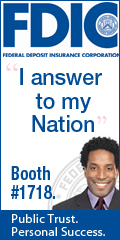Courageous Leadership: Managing During Change
 Print this article | Send to a colleague Print this article | Send to a colleague
Business
leaders can improve a fearful, changing workplace by paying attention to the
eight different archetypes of change, says Howard Ross, founder and chief
learning officer, Cook Ross Inc., and author ofReInventing Diversity:Transforming Organizational Community to
Strengthen People, Purpose, and Performance. "Recognizing the eight
personalities and managing them appropriately can lower the stress level for
everyone."
1. Accelerator
- Description: Turns up the
tempo and is always working. Also described as a workaholic, this employee is
always busy, but avoids thinking strategically. The accelerator is afraid to
say no to new assignments and additional responsibilities because it might mean
losing the job.
- Danger: The employee will
burn out.
- How
to manage: Help them manage their workload by asking them to delegate and manage
others.
2. Phantom
- Description: "If you can’t see
me, you can’t hurt me." This employee doesn’t speak up in meetings and is
almost invisible.
- Danger: The employee can
fade away and lose value to the company.
- How
to manage: Reach out to them in meetings or one-on-one to solicit their input.
Don’t let them hide but do so compassionately, not aggressively.
3. Destroyer
- Description: This is the most
visible employee in a changing workplace. Often agitated, the employee always
blames others for mistakes and acts defensively when challenged.
- Danger: The employee is
difficult to be around and self-destructive.
- How
to manage: Become a safe sounding board for the employee, focusing on facts and
helping the employee become more professional in the workplace.
4. Stiff upper lip
- Description: Everything looks
fine on the outside but the employee conceals every emotion and fear.
- Danger: The employee can
slip into a depression, which is not easy to recognize.
- How
to manage: Check in with the employee and ask how things are going. Take one person
in the department to lunch each week and talk about concerns – yours as well as
the employee’s.
5. Ostrich
- Description: This is the
employee who sees nothing and always plans to deal with an issue later.
- Danger:The
continual denial of the situation leaves the employee unprepared for what can
happen.
- How
to manage: Get them to face reality by saying "I know you don’t want to think
about this but here is the situation. How do you feel about the situation?"
6. Class clown
- Description: The class clown uses
humor to distract people and avoid difficult issues.
- Danger: Co-workers are
distracted from their own responsibilities.
- How
to manage: Set clear limits about the use of jokes in the office.
7. Quit and stay
- Description: This employee is
apathetic, cynical and not motivated, doing only the minimum amount of work to
stay employed.
- Danger: This is
potentially the most dangerous employee because the apathy and mediocrity can
be contagious. Other employees wonder why they should work hard when this
employee isn’t working.
- How
to manage: Hold the person accountable for actions. If you can’t get this
employee to engage in conversation about the apathy, look at moving the person
to another department or to a different position within the current department.
Sometimes sitting in a different "chair" gives an employee a new perspective.
8. Solid citizen
- Description: A high level of
self-confidence, awareness that there are other job options and a positive
attitude toward job are the hallmarks of the solid citizen.
- Danger: This is a
valuable employee and the one a company is most likely to lose if a better
opportunity is offered.
- How
to manage:
- Keep the solid citizen engaged and be clear that you want this
employee to stay. Provide leadership opportunities and let the employee see a
potential to grow.
"Too
often, we give all of the attention to the problem employees," says Ross. "If
you want to keep employees who add value to the company, be sure to meet their
needs." – Sheryl S. Jackson
|
|



